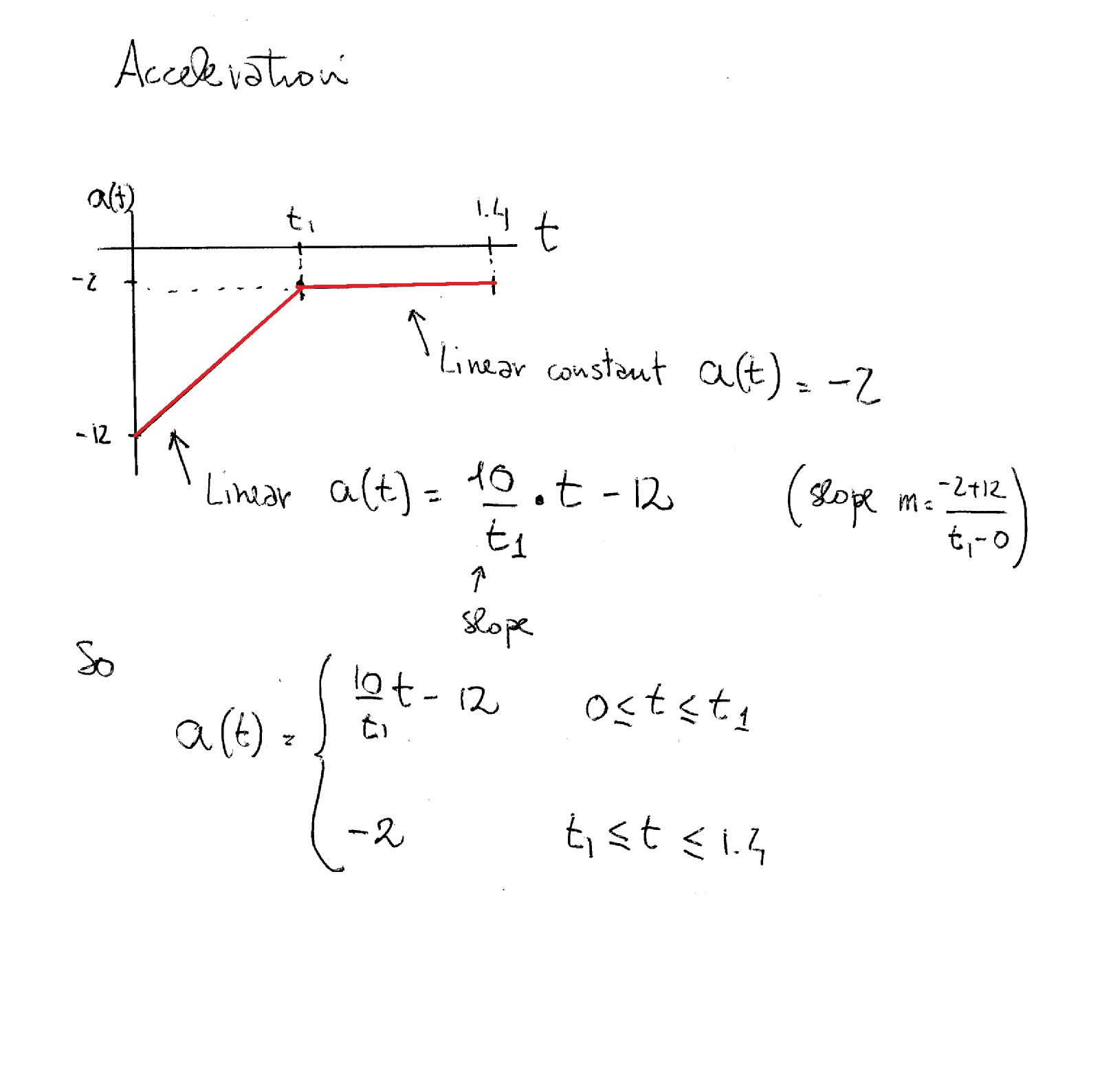In a water- tank test involving the launching of a small model boat, the model's initial horizontal velocity is 6 m/s and its horizontal acceleration varies linearly from -12 m/s2 at t=0 to -2 m/s2 at t=t1 and then remains equal to -2 m/s2 until t=1.4 ?
1 Answer
I am not sure about what you need but I think it is
Explanation:
The boat has a variable acceleration that can be described as linear from
Graphically:

Integrating the two expressions we can get to the velocity functions:
setting at
so:
and:
setting at
so:
At
and

